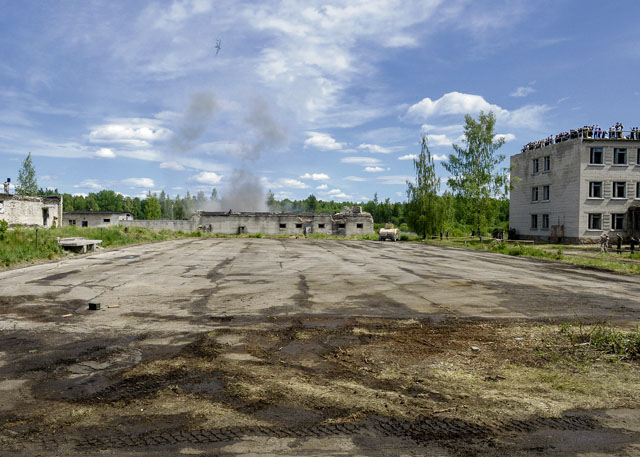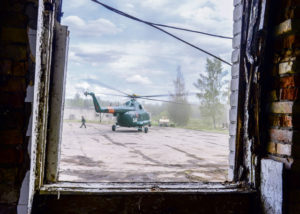
SKRUNDA, Latvia — Saber Strike 18, wrapped up with a large scale battle scenario involving multiple countries in Skrunda, Latvia, June 13.
Following Saber Strike’s focus to build stronger partnerships, agility in a dynamic environment, and ready and postured forces, the scenario combined multiple facets of joint-military operation on the battlefield with different nations.
“Exercises like this help build relationships,” said Capt. Rihards Zalitis, Latvian armed forces range control officer. “This year we had the (Enhance Forward Presence) Battle Group and many other nations that we get to work with. We see how they work, they see how we work, and it makes us better every day.”
Forces that participated included the Spanish, Italian, Canadian and Latvian platoons as the defending force with the objective to delay the attacking forces as long as possible; and U.S. Marines, United Kingdom Royal Marines, Michigan Army National Guard, and Norwegian forces as the attacking force.

While the battle scenario was the culminating exercise for Saber Strike 18 in Latvia, it is only a small part of the effort put into Saber Strike.
During the timespan of Saber Strike 18, KC-135 Stratotankers flew approximately 32 hours and refueled 99 aircraft between A-10 Thunderbolt IIs, F-16 Fighting Falcons, and B-1 Lancers. The A-10s alone flew 96 sorties since they arrived in Latvia. Altogether the aircraft were used in efforts to finetune the combination of air and ground forces.
“This type of training works great,” said U.S. Air Force Maj. Deryck Castonguay, 171st Air Refueling Squadron KC-135 Stratotanker instructor pilot. “It allows us to integrate our people with partners, and to work in other nations to gain experience.”
Even though the exercise was finished in Latvia on June 13, other countries that participated in Saber Strike continued training exercises until June 15.
One such force included the MQ-9 Reaper aircraft with approximately 20 hours of support during the exercise. The MQ-9 provided close air support, armed overwatch, and an airfield seizure along with its intelligence, surveillance, and reconnaissance missions for Saber Strike.
Saber Strike is intended to promote regional stability and security, while also strengthening partnership capabilities. The combined training opportunities that it provided greatly improve interoperability among participating NATO allies and key regional partners.
“These partnerships would never happen if it wasn’t for big exercises like this,” said U.S. Air Force Master Sgt. Chuck Barth, Grayling Air Gunnery Range Joint Terminal Attack Controller instructor. “This is a really good thing for everybody.”
In regard to being an opportunity for growth and development of forces, Saber Strike was a huge success.
“Saber Strike 18 accomplished everything we set out to do this year,” said Evette Seck, lead U.S. Air Forces in Europe planner for Saber Strike 18. “From building partnerships and integration, to combining the facets of air and ground capabilities for quick precise responses, the participating nations made it happen. This is what Saber Strike brings to the table, and the next iteration should be even better.”







